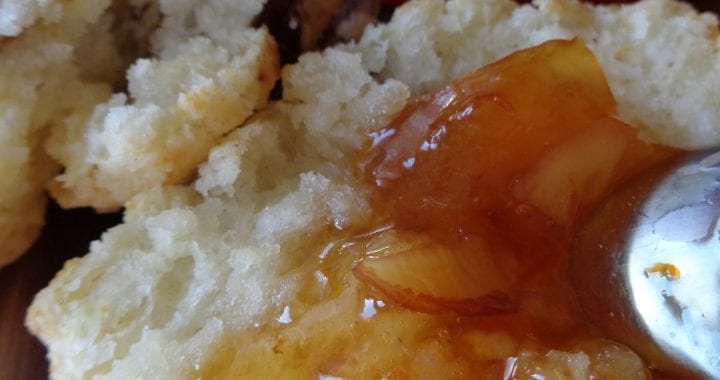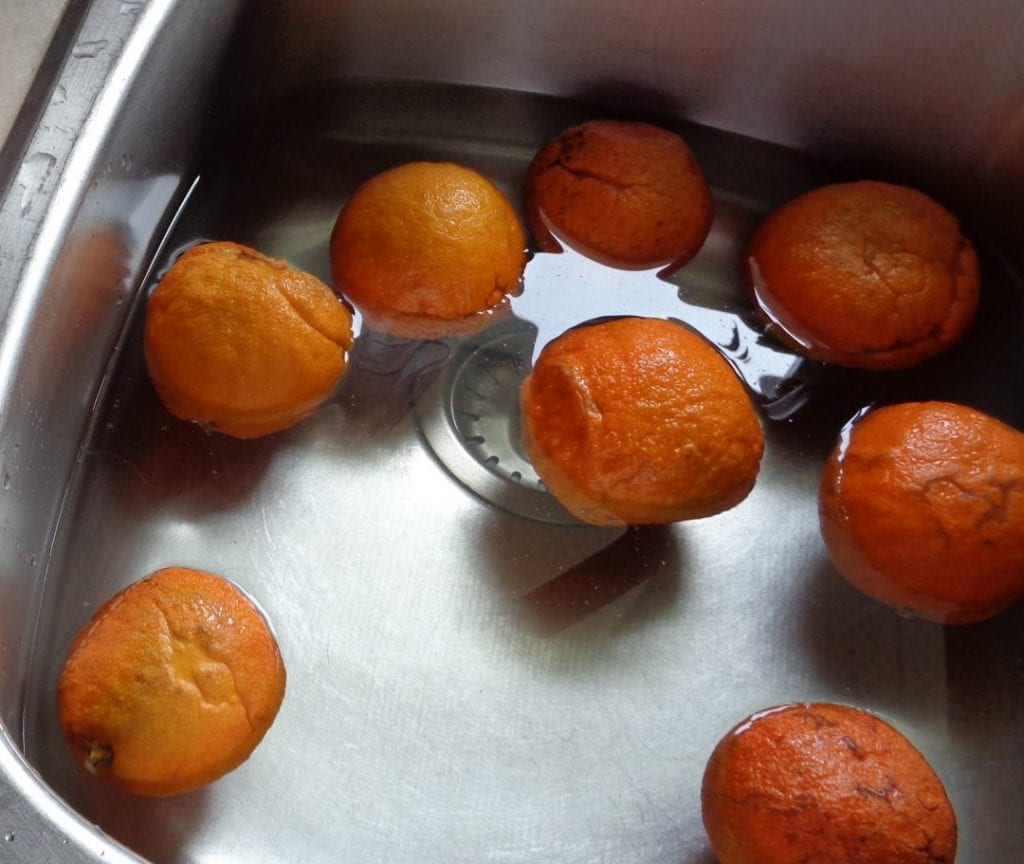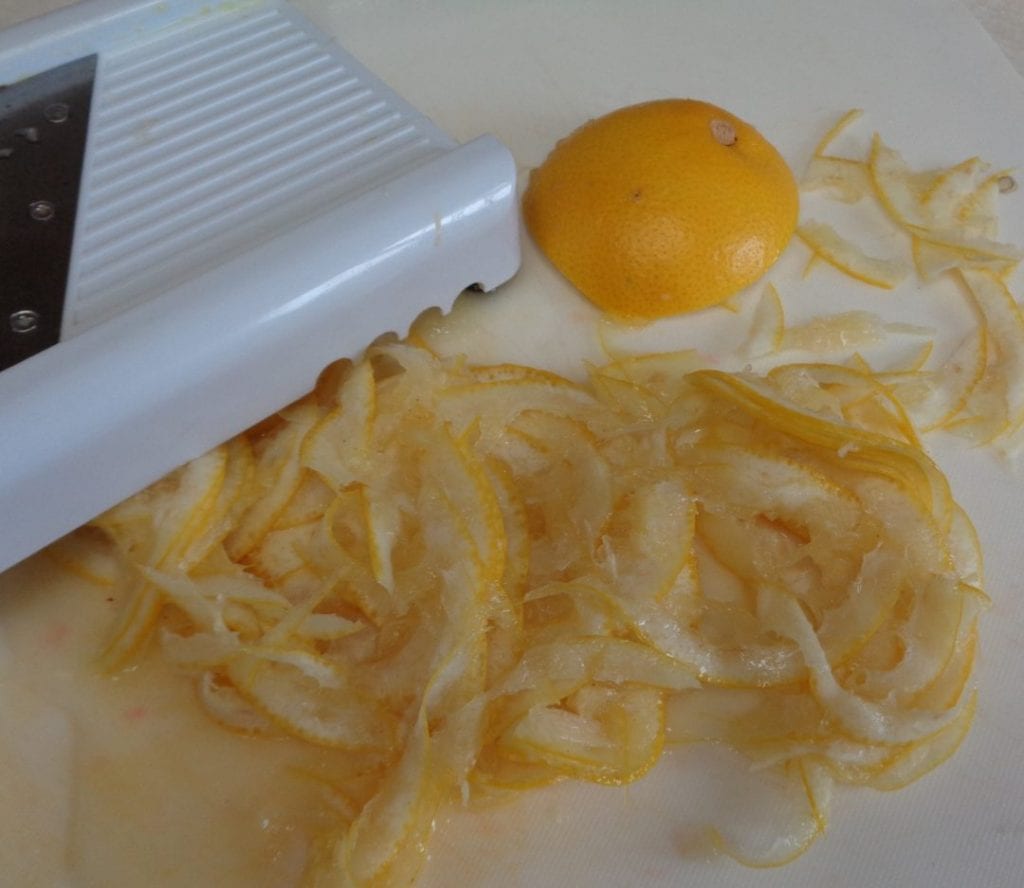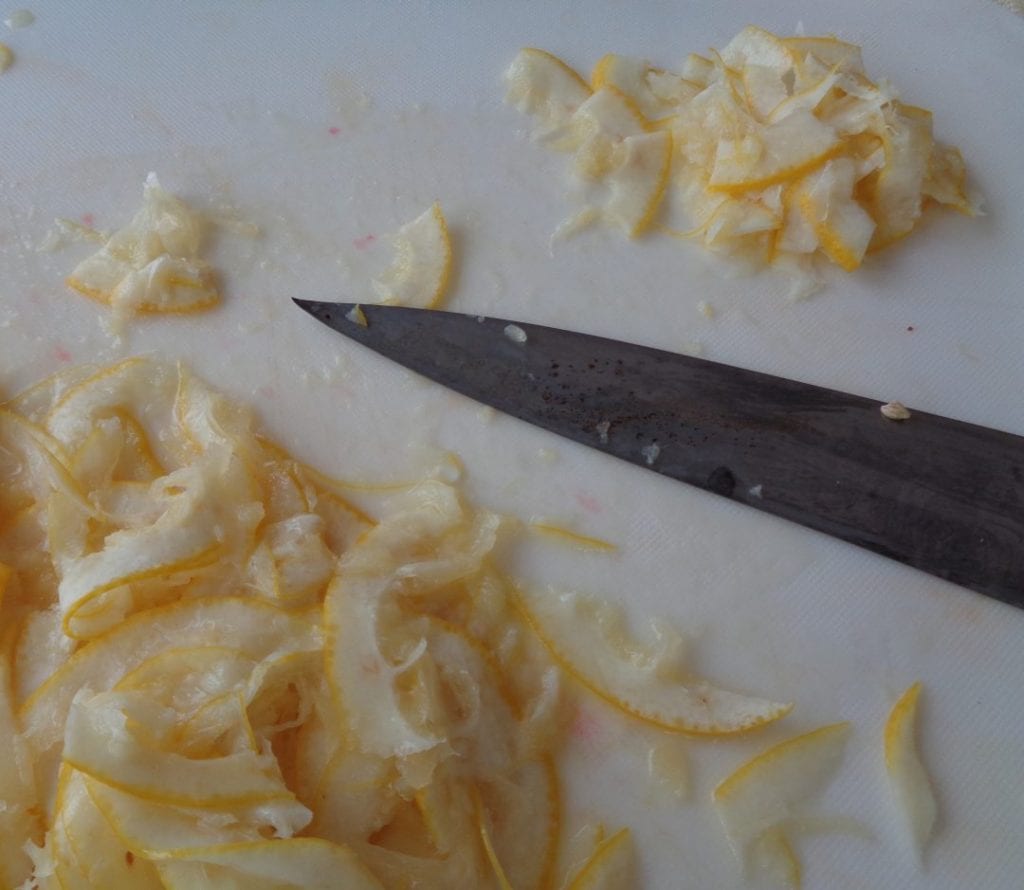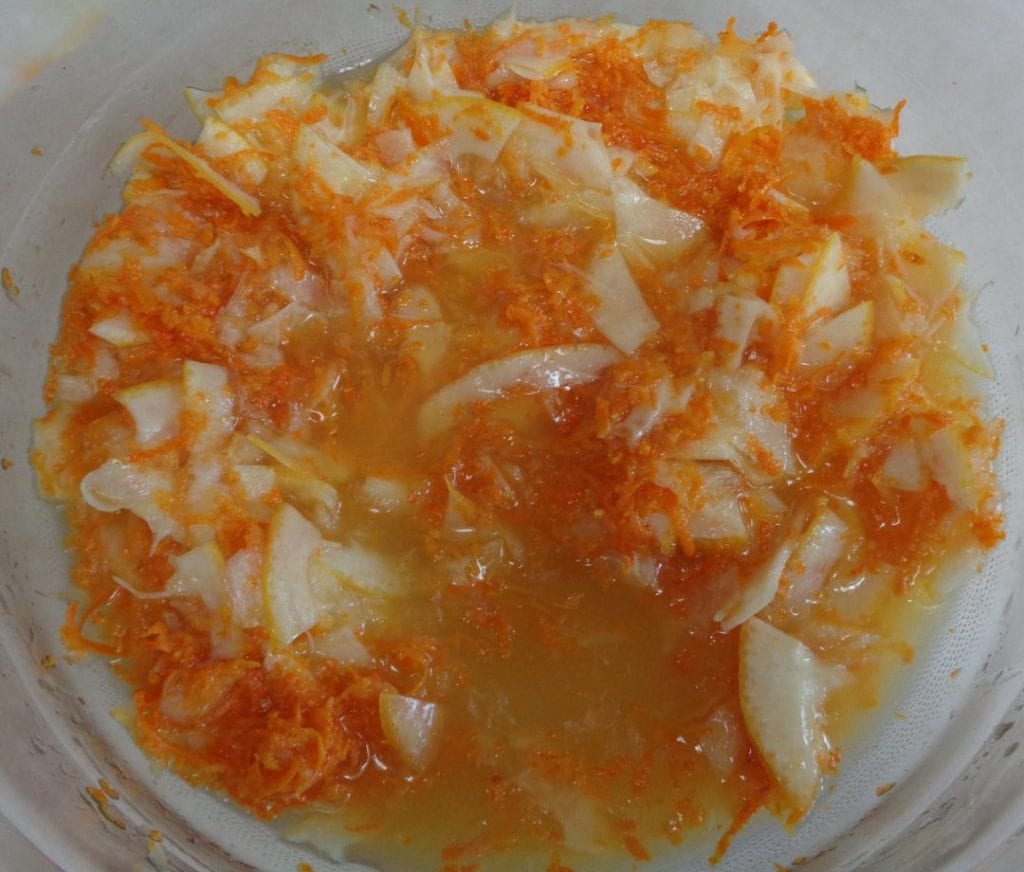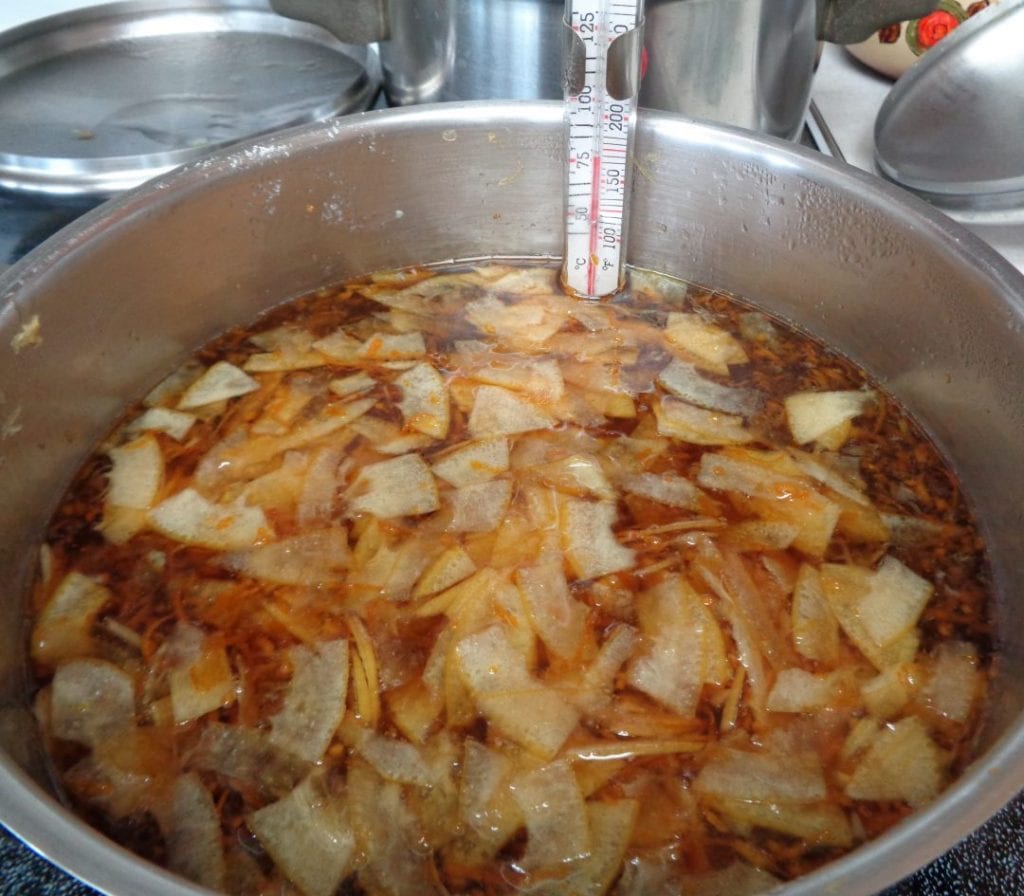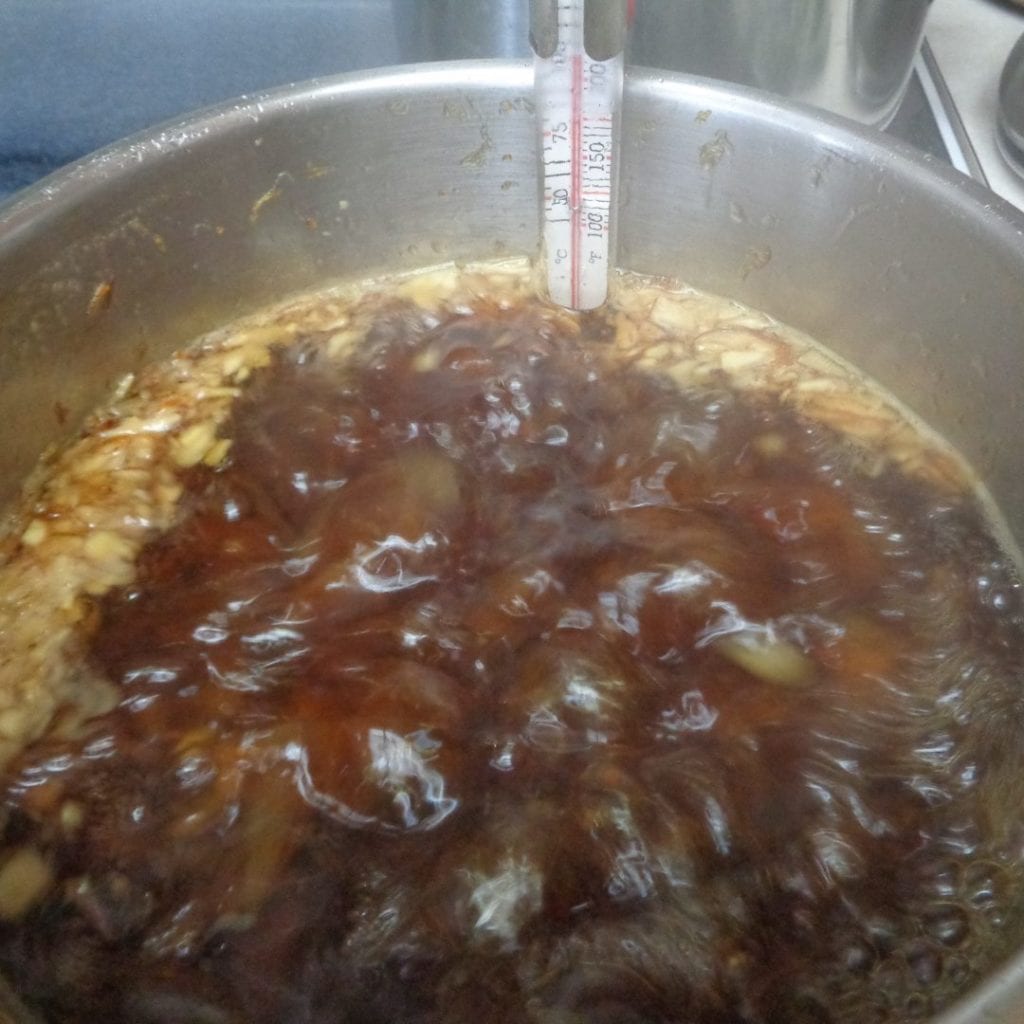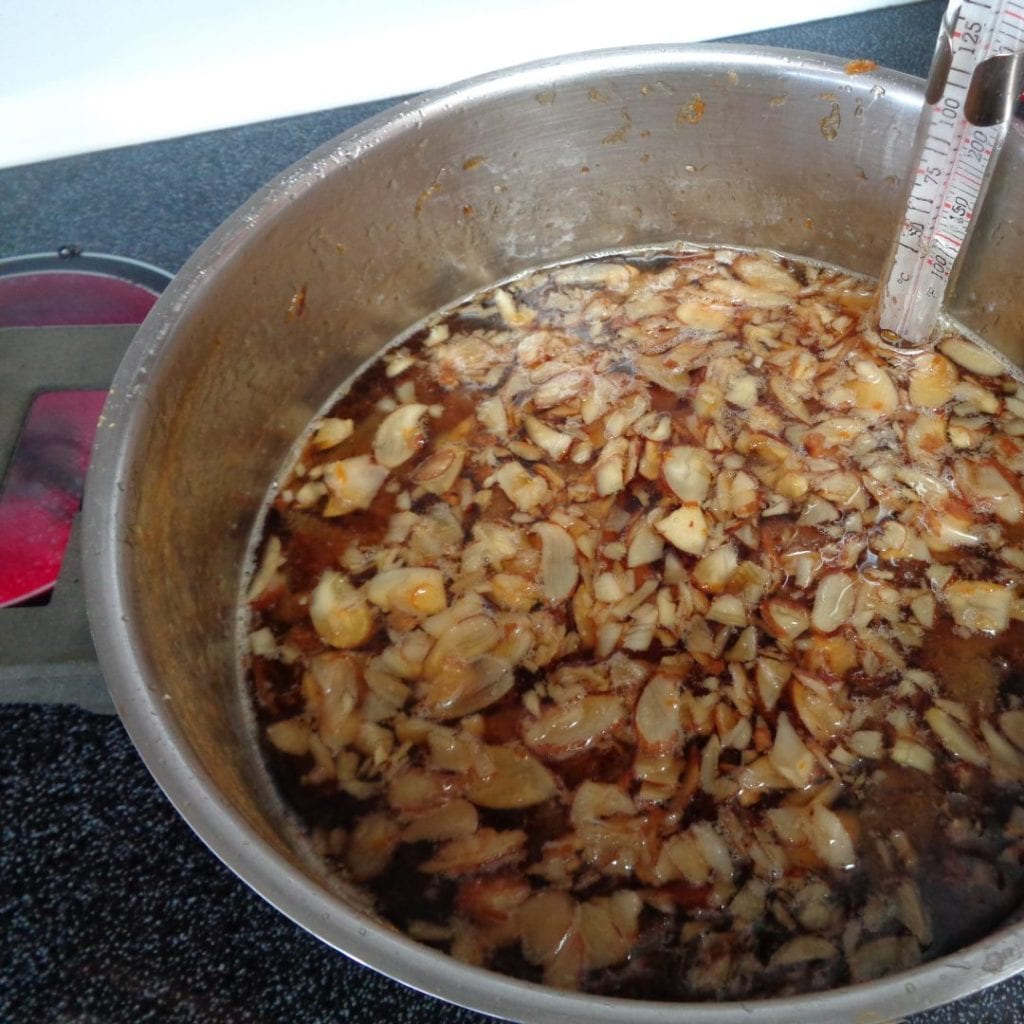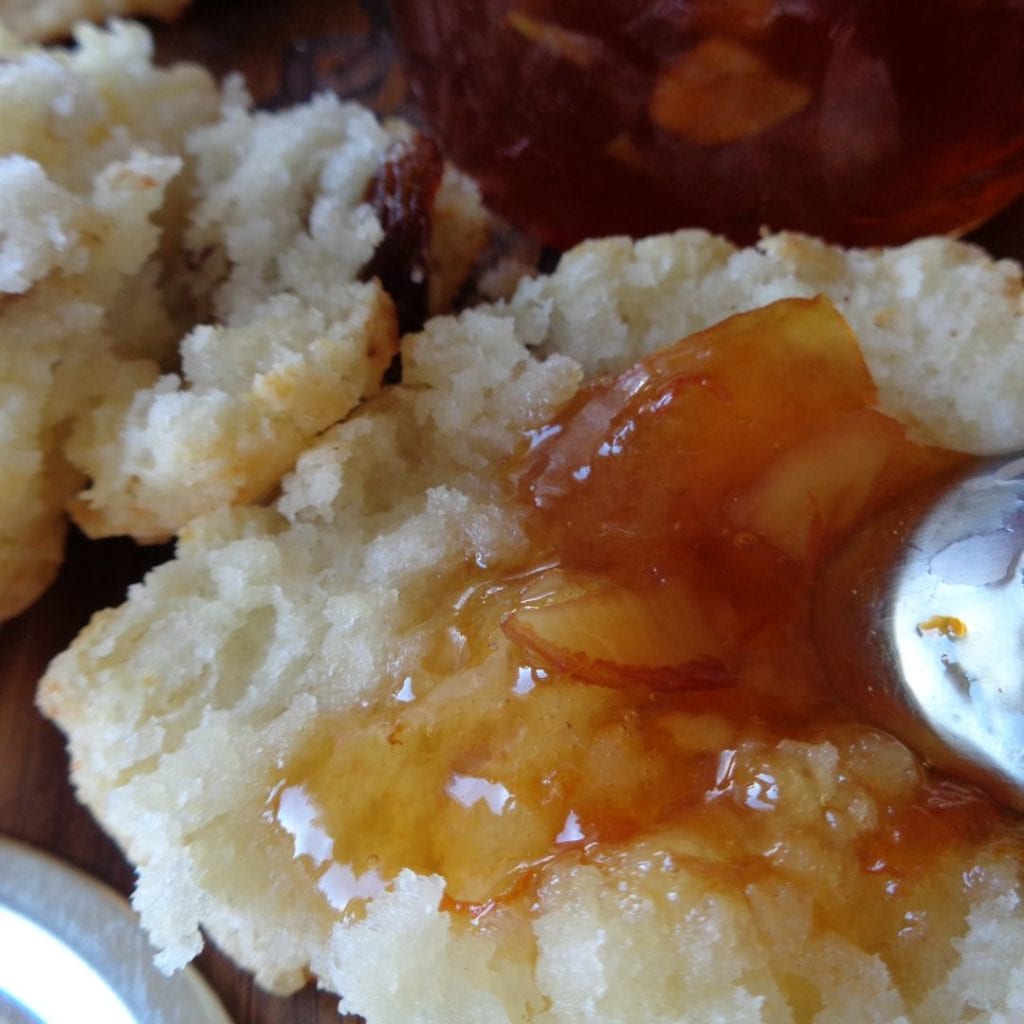According to the Telegraph.co.uk, “The story goes that marmalade was invented in 1700, when a storm-damaged Spanish ship, carrying Seville oranges, sought refuge in Dundee harbour. The cargo was sold off cheaply to James Keiller, a down-on-his-luck local merchant, whose wife turned it into a preserve.” Now the story may be true for commercial production of Seville orange marmalade, it is not generally correct.
The article goes on to say”…Britain’s claim to have invented it surprisingly shaky. The Romans were partial to a gooey fruit preserve, usually made from quinces preserved and sweetened by honey, which was known as “marmelo”. The name and its derivations are found all over Europe – “marmelada” in Greece, “marmelatta” in Italy. According to C Anne Wilson’s compendious Book of Marmalade, the first shipments of a Portuguese version – still made from quinces, but flavoured with musk and rosewater – began arriving at the Port of London in the late 15th century. It was greatly sought after, but far from slapping it on a morning slice of toast, the fashionably gentry would serve it as a sweet at the end of a meal……..
……There is persuasive evidence that orange marmalade was made in England from Tudor times. Mrs Hasell-McCosh has in her possession a record book compiled by an ancestor in the early 17th century which contains recipes for orange marmalade. “The Scots can’t claim this one,” she says. “We are the home of marmalade.”
You will need:
Juice & zest from 3 pounds of Seville oranges (5-7)
2 lemons, thinly sliced and the juice
12 cups sugar
1 cup brandy
1/2 cup sliced almonds
Begin by gathering an apron and washing your hands. These are two things that help to separate then and now. Bring your focus into the present moment by releasing any distracting “nigglies”. Close your eyes and take several deep, long, calming, breaths and with gratitude for time, ingredients and skills, begin.
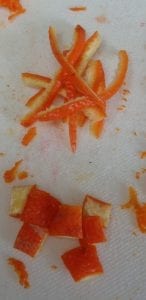 Scrub the oranges and roll back and forth several times. This will break down the membrane of the orange sections and allow for more juice to be released.
Scrub the oranges and roll back and forth several times. This will break down the membrane of the orange sections and allow for more juice to be released.
Zest with medium grater, keeping any blemished areas away from the grater. Cut the oranges in half and juice.
It is possible to also very thinly slice the entire orange peel by hand. I wanted a finished product with lots of flavour and not much chewing and so the grater worked for me.
If you choose the route to larger pieces, consider taking some of the pith out of the peel before slicing. Do this by taking a half orange peel cutting it into three or four sections and then horizontally cutting off half the white pulp between the peel and the orange sections.
The same thing is possible if cutting the peel into small cubes. The picture to the left shows peel pieces with half the pith removed. The pith that has been cut off will be added to the pips and leftover orange pieces that are cooked per the instructions below.
Remove any labels on the lemons and wash thoroughly. Allow to dry as this will make the lemons easier to handle while slicing.
Using a mandolin slice the lemons very thinly, keeping all the juice. Remove pips and cut any longer sections of lemon rind into thirds or quarters.
Combine lemons and their juice with Seville oranges zest and juice. Cover and place in the fridge until the next step is complete.
Cook the remaining pulp, pips and bits for 45 minutes in just enough water to cover. The reason the cooking time is so short is that I grated the Seville oranges and therefore did not have any thick chunky pieces that would have required a longer cook time. It’s purpose is to gather flavour and pectin so the marmalade will set properly.
If your pieces are thicker then boil longer. You are complete when the thicker pieces are translucent and squishy/disintegrating when pressed between your fingertips.
Let sit over night then strain and combine in a large pot with the fruit mixture in the fridge. I got 4 cups.
Place several saucers in the freezer.
Add sugar to the pot. Stir to dissolve and quickly bring to a boil. Let bubble for about 15 minutes or until mixture reaches 220 degrees F. At 215 degrees F., add the almonds and continue boiling until set point is reached.
To test, first allow the bubbles to subside. Take one of the saucers from the freezer and spoon a teaspoon of marmalade liquid onto it before returning the plate to the freezer for 1 minute. If set point has been reached then your finger will create a wrinkle along the surface of the marmalade when pushed forward. The marmalade will stay wrinkled when your finger is taken away. If that doesn’t happen and the marmalade flattens out again, return the pot to the heat.
Bring the mixture back to a boil and wait two minutes before re-testing. This process can be repeated until set point is reached, which is why putting several saucers in the freezer before starting is a good idea.
Technically 220 degrees F. should be set point on a thermometer but it is always good to have a backup verification as once bottled and sealed, it is additional work to open, clean, reboil and rebottle. This process will also darken the marmalade.
Allow the marmalade sit for 10 minutes before potting. Pour in the brandy and stir. Allowing the marmalade it’s cooling time will help the almonds, orange zest and lemon rind to not float to the top of the jar when bottled.
Transfer the marmalade to hot, sterilized jars and process. Allow the jars to sit away from cold drafts for 24 hours. Check that jars are properly sealed. Wash away any sticky drops that fell onto the outside of the jars and label before storing in a cool dark location.
Serve on toast, fresh baked scones, with pancakes, warmed over ice cream or any other way your heart ( and tummy) desire. Putting into gift baskets works too!
Brandied Seville Orange Marmalade with Almonds from My Kitchen Wand

